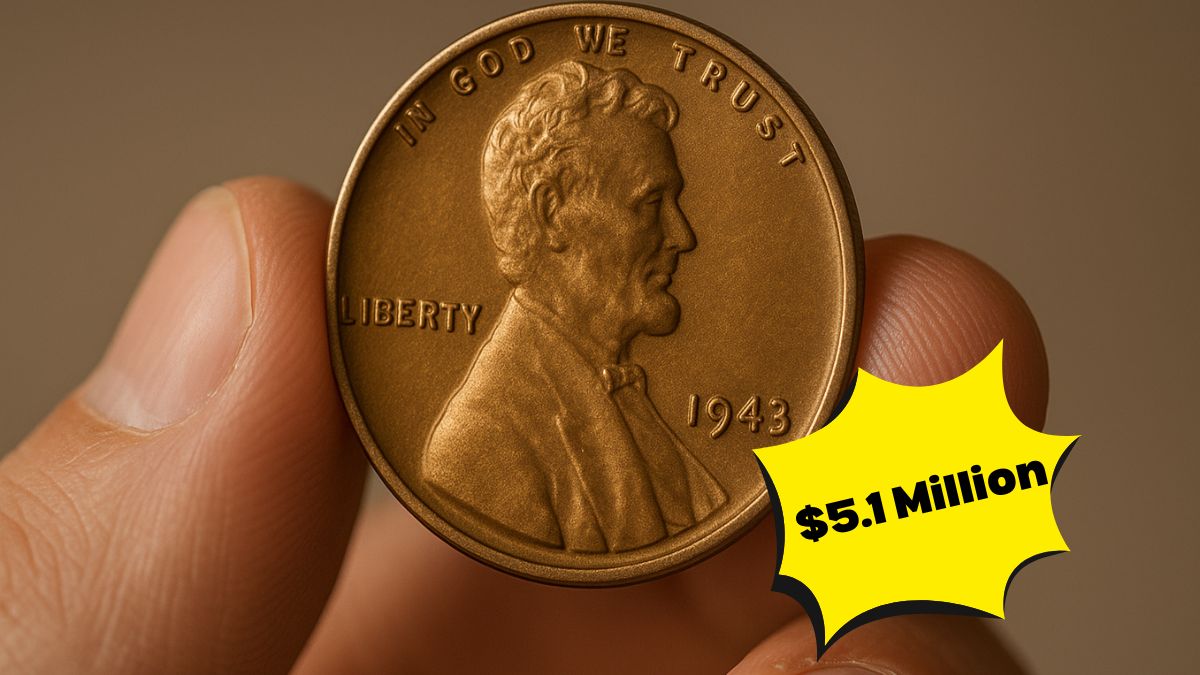Is the $5.1 Million Lincoln Wheat Penny Still Circulating?
Imagine finding a penny in your pocket that’s worth $5.1 million. It might sound like a dream, but it’s a reality for a rare version of the Lincoln Wheat Penny.
This article delves into the fascinating history, rarity, and current status of this extraordinary coin.
The Legacy of the Lincoln Wheat Penny
Introduced in 1909 to commemorate the 100th anniversary of President Abraham Lincoln’s birth, the Lincoln Wheat Penny was the first U.S. coin to feature a real person’s image.
Designed by Victor David Brenner, the coin’s obverse showcases Lincoln’s profile, while the reverse displays two wheat stalks, symbolizing prosperity. This design was minted until 1958, after which it was replaced by the Lincoln Memorial design.
The Rare 1943 Bronze Lincoln Wheat Penny
During World War II, the U.S. Mint switched from copper to zinc-coated steel for penny production to conserve copper for the war effort.
However, a few pennies were mistakenly struck using leftover copper planchets from 1942. These rare 1943 Bronze Lincoln Wheat Pennies are among the most valuable coins in existence.
Key Features of the 1943 Bronze Penny
- Material: Bronze (95% copper, 5% tin and zinc)
- Weight: 3.11 grams
- Magnetic: No (unlike the steel pennies of 1943)
- Known Examples: Approximately 20
Record-Breaking Sales
The rarity and historical significance of the 1943 Bronze Lincoln Wheat Penny have led to astronomical auction prices. In January 2025, one such penny sold for $5.1 million, setting a new record for the highest amount paid for a penny.
How to Identify a 1943 Bronze Lincoln Wheat Penny
To determine if you have one of these rare pennies:
- Check the Date: It should read 1943.
- Test with a Magnet: If it’s attracted to a magnet, it’s a common steel penny. The bronze version is not magnetic.
- Weigh the Coin: A bronze penny weighs 3.11 grams, while a steel penny weighs 2.7 grams.
- Inspect the Color: Bronze pennies have a reddish-brown hue, whereas steel pennies are grayish.
Comparative Table of 1943 Pennies
| Feature | 1943 Steel Penny | 1943 Bronze Penny |
|---|---|---|
| Material | Zinc-coated steel | Bronze |
| Weight | 2.7 grams | 3.11 grams |
| Magnetic | Yes | No |
| Color | Grayish | Reddish-brown |
| Estimated Value | $0.10 – $1.00 | Up to $5.1 million |
| Known Examples | Over 1 billion | Approximately 20 |
Is the $5.1 Million Penny Still in Circulation?
While it’s highly unlikely, it’s not impossible. Some of these rare pennies could still be hidden in coin jars, collections, or even in circulation. Given their value, most have been identified and secured by collectors, but there’s always a slim chance of discovering one.
The 1943 Bronze Lincoln Wheat Penny stands as a testament to the fascinating quirks of coin minting history. With only about 20 known examples and a record sale of $5.1 million, it’s a collector’s dream.
While the chances are slim, the possibility that one might still be in circulation adds an element of excitement to every penny you come across. So, next time you receive change, take a closer look—you might just be holding a fortune in your hand.
FAQs
How can I verify if my 1943 penny is the rare bronze version?
Conduct a magnet test (bronze is non-magnetic), weigh the coin (bronze weighs 3.11 grams), and inspect its color (bronze has a reddish-brown hue). For definitive verification, consult a professional coin grading service.
Why were some 1943 pennies made of bronze instead of steel?
During the transition to steel pennies in 1943, a few leftover bronze planchets from 1942 were accidentally used, resulting in the rare 1943 bronze pennies.
What should I do if I think I have a rare penny?
Avoid cleaning the coin, as this can reduce its value. Store it safely and consult a reputable coin dealer or grading service for evaluation.

